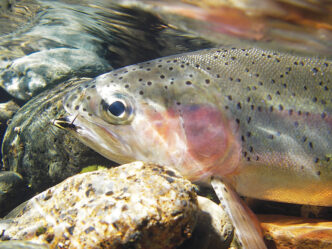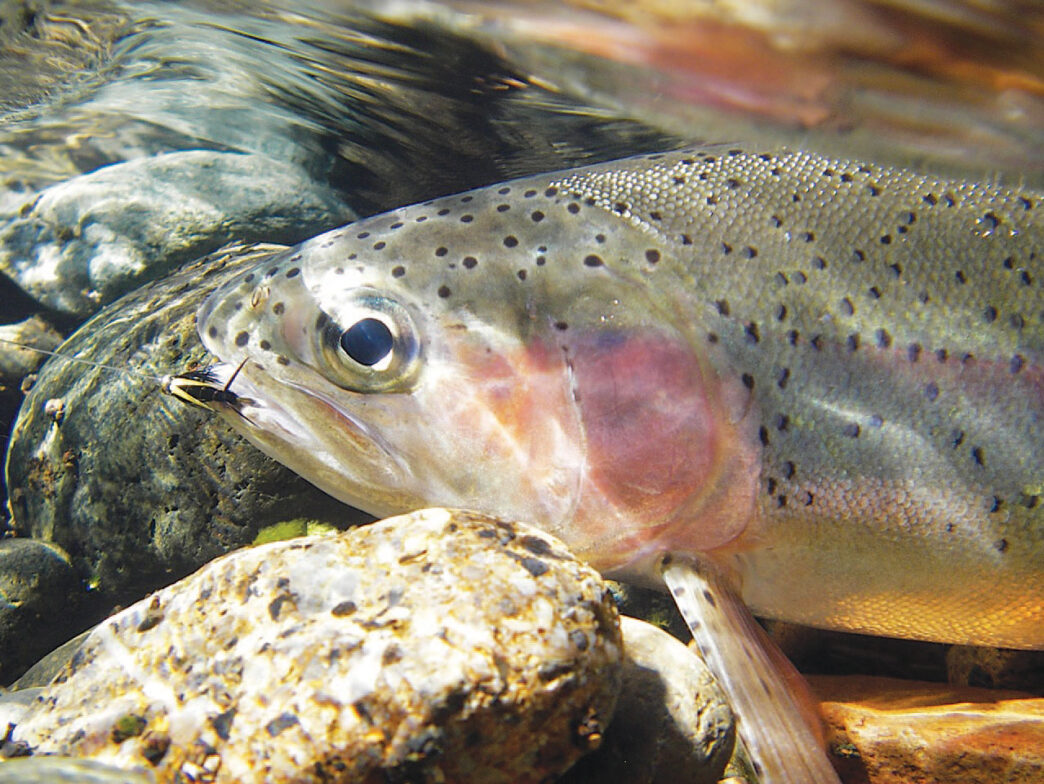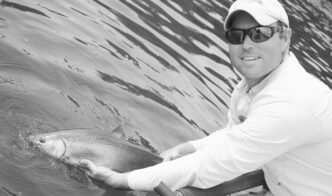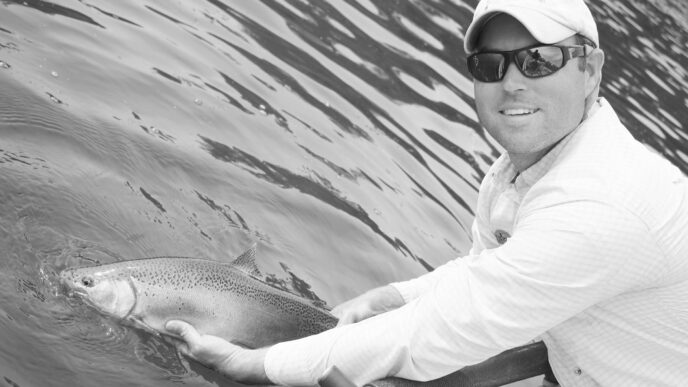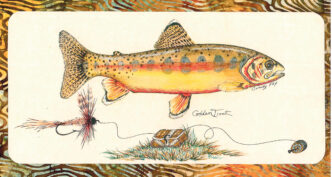Allan Craig retired from a 30-year public school teaching career in 2002. In his words, it was “a great job, allowing me to work with a lot of wonderful kids.” Away from school, he primarily fished, hunted, and traveled.
In retirement, among his missions has been trying to catch as many different fish species as possible. In 2013, he completed the California Heritage Trout Challenge, catching all 10 of California’s native trout species in their native waters except a Paiute trout, which is not yet available for angling. Although not part of the challenge, I was with him on Crowley Lake in his quest to catch a Sacramento perch.
All the while he has been traveling the globe seeking to catch native fish species on a fly. In Australia, it was the barramundi; in Zambia and Botswana, the tiger fish; in Slovenia, the grayling; in Bolivia, the golden dorado; in Brazil, the peacock bass; on Christmas Island, the triggerfish; in the Seychelles, the bonefish; in Iceland, the Arctic char. He has Mongolia on his 2015 calendar to target the taimen. In all, Allan has 200 species on his fly-caught fish list, and he has traveled to five continents in doing so.
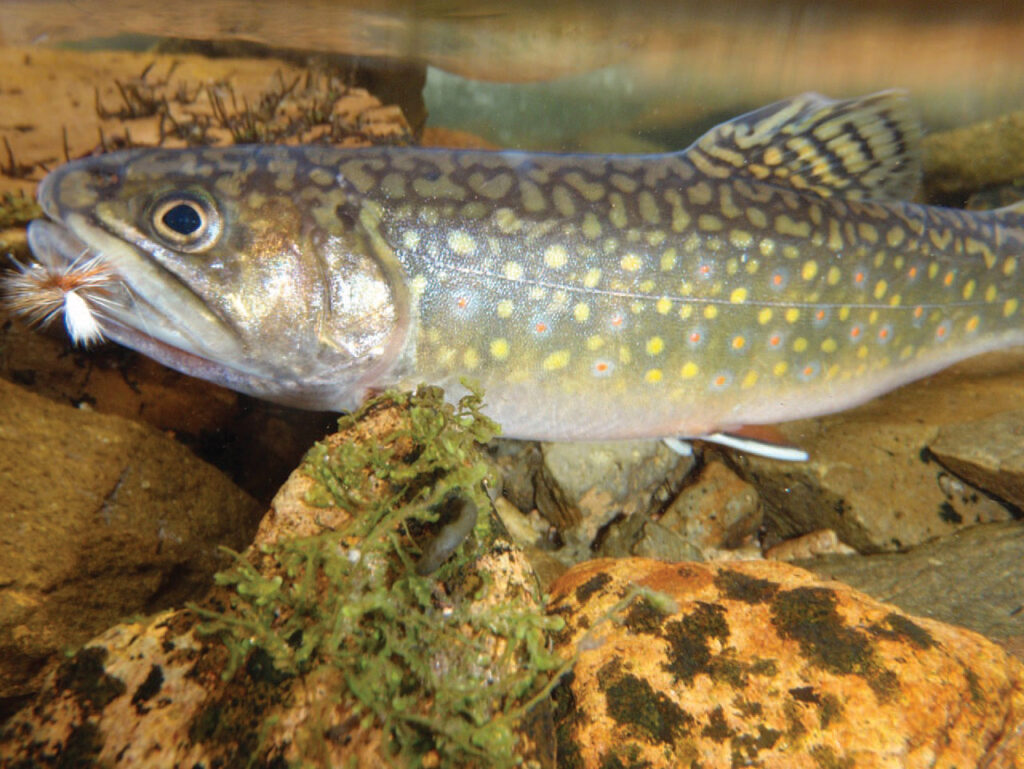
Allan’s interest in foreign lands and fish species motivated him to join the International Fly Fishing Association, an on-line chat group of about 350 members representing 48 countries. Each year, the organization chooses a different country for a group fishout and related camaraderie. He (and his wife Terry) joined them in Norway in August to fish for grayling. In 2015, Allan will host the group in Northern California, with fly fishers expected from such places as Australia, Belgium, Holland, Germany, and South Africa.
For the Shasta Trinity Fly Fishers, Allan coordinates the Trout in the Classroom Program, in which students raise trout fry for eventual release. Activities also include fly casting and fly tying. He is also a regular California Department of Fish and Wildlife volunteer, conducting angler surveys, counting fish in electroshocking studies, and carrying out other roles.
An abiding interest of his has been taking underwater photos of fish. He says that a picture of a fish in its own environment shows the specimen’s true colors. As he puts it, “A photo of a grinning angler holding a fish out of the water is more about the angler than the fish.”
On taking underwater photos, he says, “Getting set up for underwater photography is not complicated. My camera choice is one that is compact, tough in case of a fall, waterproof to 10 feet or more, and easy for a one-hand operation. My other hand will need to deal with the fish! My first waterproof camera was a Pentax Optio now over 10 years old. It is still my backup. I mostly use an Olympus Stylus Tough 8000, now obsolete, of course, with many new models to choose from. Whatever camera you choose needs to be readily accessible and easy to use when fishing. I have attached a flotation strap on mine, which is invaluable.
“The basic technique is simple: Catch a fish, corral it with your free hand, camera in the other, place the camera underwater, and start taking great photos. Well . . . not quite! The fish does not want its picture taken, your head is nowhere close to the camera for alignment, and you may be photographing in your own shadow. Be ready to delete a lot of flawed pictures.
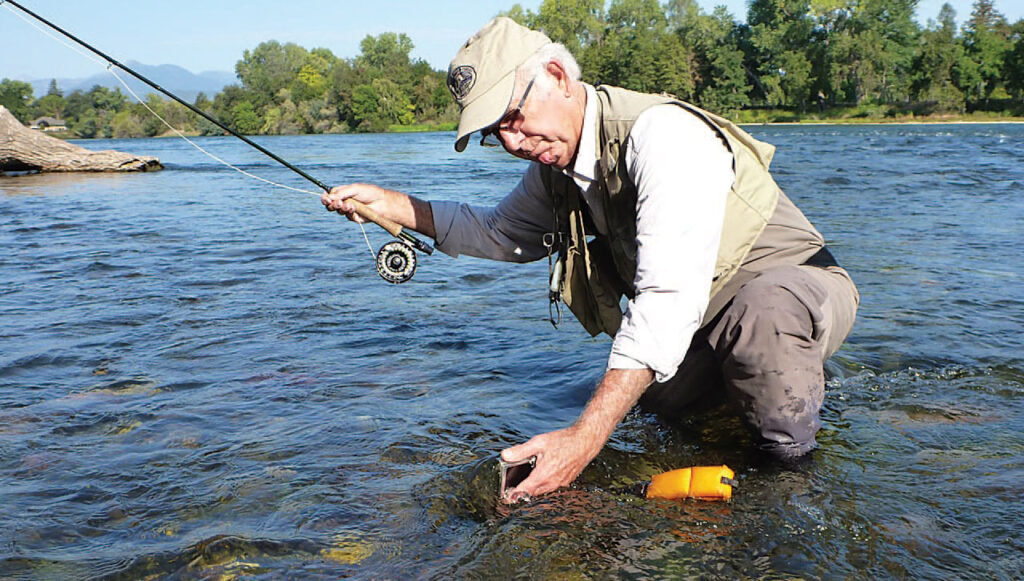
“Some suggestions: First, hold the line and don’t touch the fish. They tend to calm down a bit if you don’t touch them, and it will be a more natural pose. Second: lead the fish into shallow water. It will settle near stones, and you will get better photos. The rocks below and the reflections from above really add to the aesthetics of the photo. You want the sun at your back, yet need to have your shadow out of the way. Aligning the camera with the subject is trial and error. I’ve tried snorkeling, where I can actually see the image in the LCD monitor when taking the photo, but I really prefer the colors and reflections I get in water that is only several inches in depth. Wearing a mask and snorkel is not very practical when fishing anyway, especially in 40-to-50-degree water!
“Another suggestion is to hold the line tightly. A fish that seems calm and relaxed may be playing possum. I was trying to photo a steelhead once when it suddenly took off. The line slipped from my hand, the fish went south, my fly rod was facing north, and my two-piece rod was now a three-piece. I did manage to bring the fish back with the broken rod, unhooked the fly from the steelie’s jaw, and let it go on its way. No photo — the fish won that time.”



